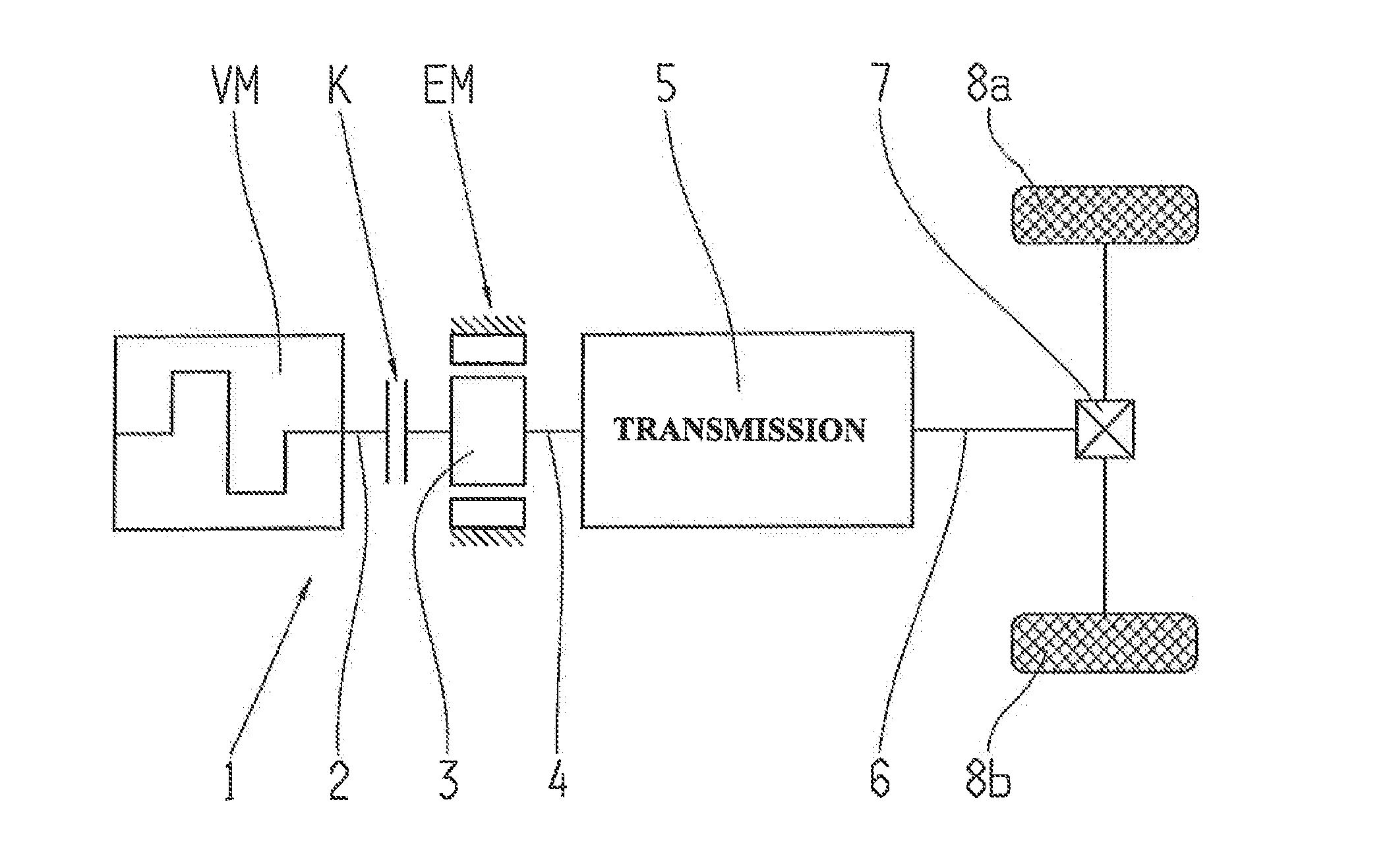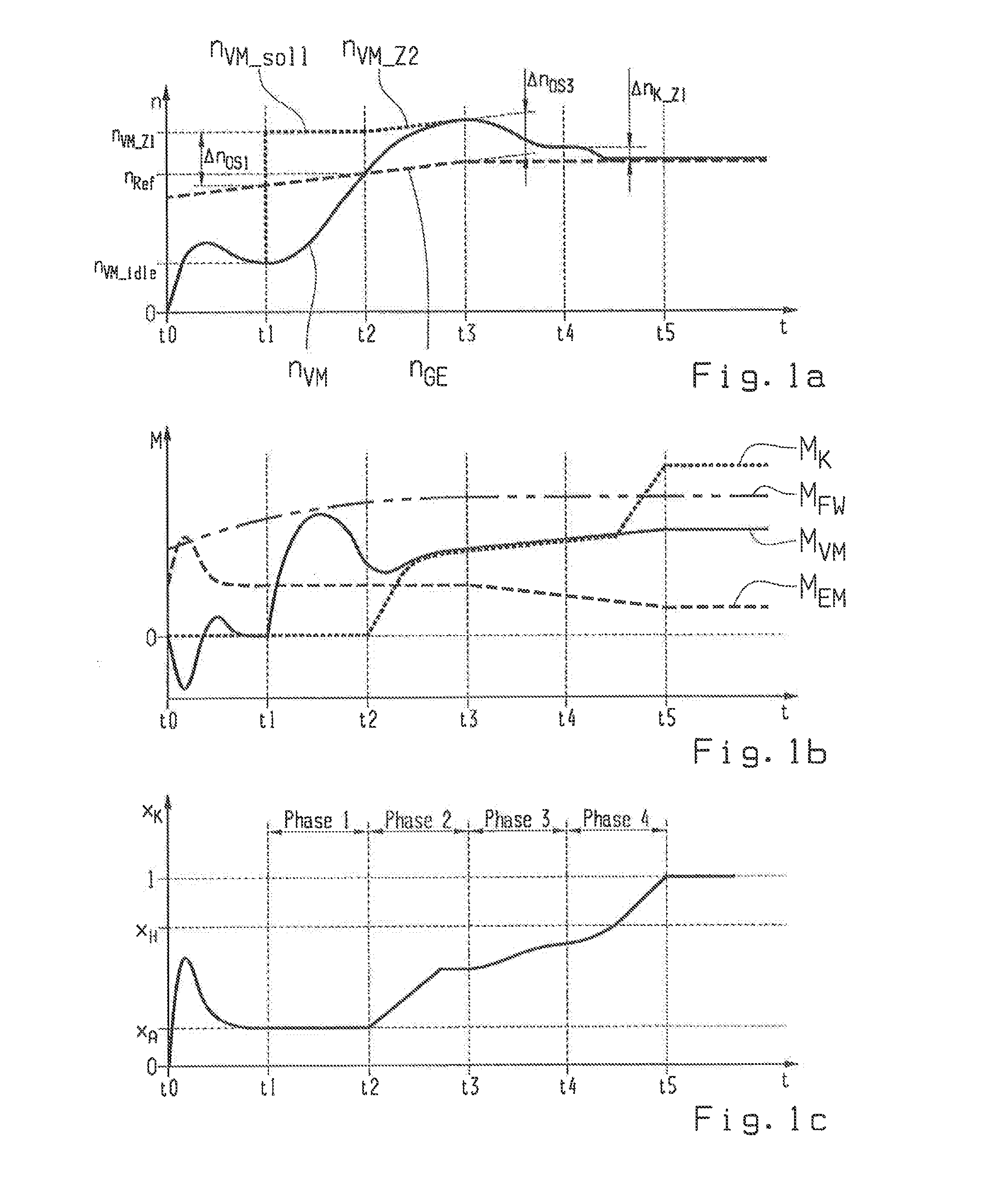Method for controlling a hybrid drive train of a motor vehicle
a hybrid drivetrain and motor vehicle technology, applied in vehicle position/course/altitude control, process and machine control, instruments, etc., can solve the problem of necessary complete reduction of torque, no account of possible change of transmission input speed during closing process, and no longer sufficient power output of electric machine. problem, to achieve the effect of reducing the thermal loading of the separator clutch
- Summary
- Abstract
- Description
- Claims
- Application Information
AI Technical Summary
Benefits of technology
Problems solved by technology
Method used
Image
Examples
Embodiment Construction
[0053]FIG. 3 illustrates, in schematic form, a parallel-action hybrid drive-train 1 of a motor vehicle, with which the control method according to the invention described below can be applied.
[0054]The hybrid drive-train 1 has an internal combustion engine VM with a driveshaft 2, an electric machine EM that can be operated at least as a motor with a rotor 3, and a transmission 5 with a transmission input shaft 4 and a transmission output shaft 6. The electric machine EM is arranged coaxially over the transmission input shaft 4 and in this case, as a example, the rotor 3 of the electric machine EM is connected in a rotationally fixed manner directly to the transmission input shaft 4. Alternatively, the rotor 3 of the electric machine EM could be drive-connected to the transmission input shaft 4 by way of a step-down transmission stage, so enabling a coaxial or axis-parallel arrangement of the electric machine EM relative to the transmission input shaft.
[0055]With the direct connectio...
PUM
 Login to View More
Login to View More Abstract
Description
Claims
Application Information
 Login to View More
Login to View More - R&D
- Intellectual Property
- Life Sciences
- Materials
- Tech Scout
- Unparalleled Data Quality
- Higher Quality Content
- 60% Fewer Hallucinations
Browse by: Latest US Patents, China's latest patents, Technical Efficacy Thesaurus, Application Domain, Technology Topic, Popular Technical Reports.
© 2025 PatSnap. All rights reserved.Legal|Privacy policy|Modern Slavery Act Transparency Statement|Sitemap|About US| Contact US: help@patsnap.com



